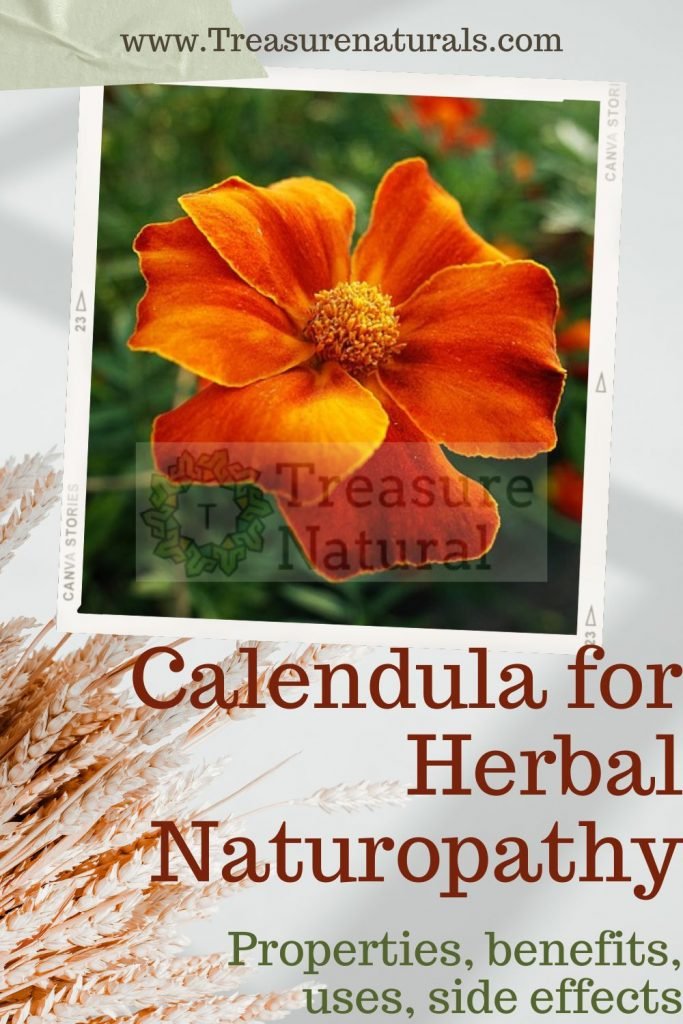
Calendula is an antibacterial and anti-inflammatory plant, useful against menstrual pain, in case of colitis and for sunburn. Find out about the beneficial properties, what are the contraindications of calendula and how to use it.
The marigold (Calendula officinalis) belongs to the Composite family. Also known as “Mary’s gold”, calendula is very useful as an antispasmodic and anti- inflammatory. Let’s find out better.
Properties of the marigold
Calendula contains triterpenes, flavonoids, polysaccharides, carotenes, phytosterols, essential oil, mucilage, salicylic acid and bitter substances. For internal use, generally as mother tincture or glycerin macerate, it is used in dysfunctions of the female genital system, since it increases scarce menstruation and decreases abundant ones. It has an antispasmodic action on menstrual and abdominal pain.
The anti-inflammatory property acts on the irritation of the mucous membranes, given the presence of mucilage, and is therefore indicated in case of colitis, gastritis , ulcers and any pathology affecting the internal tissues.
For external use, its anti-inflammatory, antiseptic, healing, refreshing, emollient and dermopathic activities make it the elective remedy for burns, wounds, redness and irritation of the skin, mouth ulcers and gum inflammation.
How to use
Internal Use
INFUSION: 1 level spoonful of calendula, 1 cup of water Pour the calendula flowers into the boiling water and turn off the heat. Cover and leave to infuse for 10 min. Filter the infusion and drink it in case of abdominal spasms or menstrual pain and inflammation of the gastro-intestinal system. Mother tincture of calendula : 30 – 40 drops, 2 – 3 times a day.
External Use
CALENDULA OIL : 100 gr of dried calendula flowers, ½ l of sweet almond oil .
Put the calendula in a glass jar with an airtight lid, cover the flowers with oil and close the jar. Once a day shake the jar. After 30 days, filter the oil through a light cloth, or gauze. Squeeze out the residue. Store in a dark glass bottle, in a cool, dark place. Calendula oil is useful for its healing and anti-inflammatory action: it promotes skin regeneration and is an excellent soothing and calming agent. Also useful for diaper rash!
Calendula mother tincture is a natural vitamin A supplement.
Contraindications
There are no known contraindications or side effects for the intake and use of calendula. The risk of allergy to the plant is also very low, given the absence of elenalin ( sesquiterpene lactones ).
Description of the plant
Plant with tap root, branched stem (50 cm) and covered with hair. The leaves are thick, lanceolate with an entire or slightly toothed margin. The flowers are flower heads with variable color from yellow to orange and appear in spring summer. The rubbed plant gives off a pleasant aroma .
Habitat of the marigold
Marigold is a rustic plant that adapts to different environments and soils. It can also be grown in hills up to 600 m above sea level, in areas with good exposure. Some varieties are grown in gardens and feature larger, more colorful flowers.
Background

The name marigold derives from the Latin calendae, meaning “first day of the month”, indicating that it blooms on the first day of each month throughout the year. Another hypothesis is that it is so called from “calendar”, since it marks the rhythm of the day, opening in the morning and closing at sunset. The peasant tradition has it that, if the flowers are closed in the morning, it will probably rain. For this reason, in medieval texts it was indicated with the name of Solis sponsa, or “bride of the sun”.
The marigold is also known by the popular name of “gold of Mary”, perhaps for the property of its infusion to relieve periodic female pains, thus highlighting its link with the feminine, with the Great Mother; on the other hand her hooked seed resembles a crescent moon.






